|
|
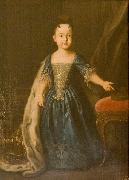 |
Louis Caravaque
|
|
Louis Caravaque, a French portrait painter, was a native of Gascony. He went to Russia, and in 1716 painted at Astrakhan the portrait of Peter the Great, which has been engraved by Massard and by Langlois. He again painted the Czar in 1723, and subsequently the Empresses Anne and Elizabeth. He died in Russia in 1752. |
|
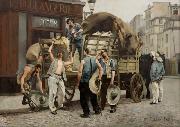 |
Louis Carrier-Belleuse
|
|
(1848-1913) was a French painter and sculptor.
He was son and pupil of Albert-Ernest Carrier-Belleuse. He designed the patterns of the Faïencerie (earthenware factory) from Choisy-le-Roi, where he was artistic director. He was also the sculptor of the Equestrian monument to General Manuel Belgrano
|
|
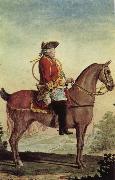 |
Louis Carrogis Carmontelle
|
|
August 15, 1717?CDecember 26, 1806,was a French dramatist, painter and architect; author of little pieces under the name of Proverbes. |
|
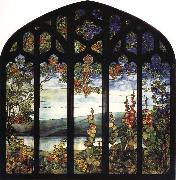 |
Louis Comfort Tiffany
|
|
American Art Nouveau Stained Glass Artist, 1848-1933
was an American artist and designer who worked in the decorative arts and is best known for his work in stained glass and is the American artist most associated with the Art Nouveau and Aesthetic movements. Tiffany was affiliated with a prestigious collaborative of designers known as the Associated Artists which included Lockwood de Forest, Candace Wheeler, and Samuel Colman. Tiffany designed stained glass windows and lamps, glass mosaics, blown glass, ceramics, jewelry, enamels and metalwork Louis was the son of Charles Lewis Tiffany, founder of Tiffany and Company; and Harriet Olivia Avery Young. Louis married Mary Woodbridge Goddard (c1850-1884) on May 15, 1872 in Norwich, Connecticut and had the following children: Mary Woodbridge Tiffany (1873-1963) who married Graham Lusk; Charles Louis Tiffany I (1874-1874); Charles Louis Tiffany II (1878-1947); and Hilda Goddard Tiffany (1879-1908). After the death of his wife, he married Louise Wakeman Knox (1851-1904) on November 9, 1886. They had the following children: Louise Comfort Tiffany (1887-1974); Julia DeForest Tiffany (1887-1973) who married Gurdon S. Parker then married Francis Minot Weld; Annie Olivia Tiffany (1888-1892); and Dorothy Trimble Tiffany (1891-1979). Many of Tiffany's descendants are active in the arts, politics, and the sciences. Only one descendant is working in glass today- Dr. Rodman Gilder Miller of Seattle, WA, |
|
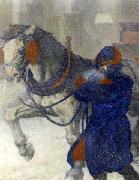 |
Louis D. Fancher
|
|
December 25, 1884-March 2, 1944) was an American artist and illustrator, notable for his drawings that appeared in books, in magazines, and on propaganda posters during World War.
Fancher was born in Minneapolis, Minnesota in 1884 and was a student of Henry Siddons Mowbray, Robert Henri, and Kenyon Cox. He was active in San Francisco as well as in New York, where he lived most of his life. |
|
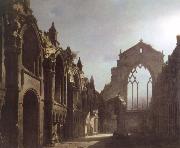 |
louis daguerre
|
|
Louis-Jacques-Mand?? Daguerre (November 18, 1787 ?C July 10, 1851) was a French artist and chemist, recognized for his invention of the daguerreotype process of photography.
Daguerre was born in Cormeilles-en-Parisis, Val-d'Oise, France. He apprenticed in architecture, theater design, and panoramic painting. Exceedingly adept at his skill for theatrical illusion, he became a celebrated designer for the theater and later came to invent the Diorama, which opened in Paris in July 1822.
In 1827, Joseph Nic??phore Ni??pce produced the world's first permanent photograph (known as a Heliograph). Daguerre partnered with Ni??pce two years later, beginning a four-year cooperation. Ni??pce died suddenly in 1833. The main reason for the "partnership", as far as Daguerre was concerned, was connected to his already famous dioramas. Niepce was a printer and his process was based on a faster way to produce printing plates. Daguerre thought that the process developed by Niepce could help speed up his diorama creation.
Daguerre announced the latest perfection of the Daguerreotype, after years of experimentation, in 1839, with the French Academy of Sciences announcing the process on January 7 of that year. Daguerre's patent was acquired by the French Government, and, on August 19, 1839, the French Government announced the invention was a gift "Free to the World."
Daguerre and Ni??pce's son obtained a pension from the Government in exchange for freely sharing the details of the process. Daguerre died in Bry-sur-Marne, 12 km from Paris. A monument marks his grave there.
|
|
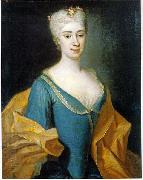 |
Louis de Silvestre
|
|
(23 June 1675 - 11 April 1760) was a French portrait and history painter. He was court painter to King Augustus II of Poland, and director of the Royal Academy of Arts in Dresden.
Sylvestre was born in Sceaux, south of Paris, the third son of Israel Silvestre, the notable engraver and drawing-master to the Dauphin himself. Louis was taught initially by his father, then trained under Charles Le Brun and Bon Boullogne; he completed his studies in Rome, where he met Carlo Maratta, whose work had a great influence on him.
After his return to Paris, Sylvester entered the Royal Academy in 1702 and was appointed professor in 1706. |
|
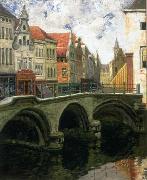 |
Louis Dewis
|
|
(1872-1946) was a Belgian Post-Impressionist painter, who lived most of his adult life in France.
Dewis was born Isidore Louis Dewachter in Mons, Belgium, the son of Isidore Louis Dewachter and Eloise Desmaret Dewachter. He spent his formative years in Liege where his closest boyhood friend was Richard Heintz (fr:Richard Heintz) (1871-1929), who also became an internationally known landscape artist.
Although the name "Dewachter" may have Flemish roots, Dewachter always considered himself a Walloon.
|
|
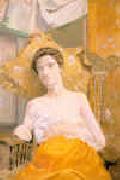 |
Louis Eilshemius
|
|
1864-1941
Louis Eilshemius Gallery
Born near Newark, New Jersey into a wealthy family, his earliest education was in Europe, after which he spent two years at Cornell University before his art studies began at the Art Students League of New York. He subsequently studied under Bouguereau at the Acad??mie Julian in Paris, and traveled widely in Europe, Africa and the South Seas, returning to the family brownstone in New York City where he was to live for the rest of his life.
His early landscapes, which show the influence of the Barbizon school and of Corot, George Inness and Albert Pinkham Ryder, gained him little recognition from critics or from the public. Around 1910, the element of fantasy in his work became more pronounced and his technique became coarser; henceforth, he often painted on cardboard instead of canvas. As his works became more idiosyncratic, so did his behavior, and he developed an unsettling habit of visiting galleries and loudly condemning the works on display.
His later, visionary works depicting moonlit landscapes populated with voluptuous nymphs caused his contemporaries particular consternation, due to their crudely rendered and often extravagantly smiling nudes. These are shown frolicking in forests or waterfalls, either alone or in groups, sometimes defying gravity by floating through the air. His paintings of New York rooftops are as lyrical as his pastoral scenes, and like them are often bounded by sinuous "frames" he painted onto his pictures.
Eilshemius also wrote verse and prose, composed music, painted, philosophized and became notorious for his numerous, often vitriolic, letters-to-the-editor of various New York City publications. His lack of public acclaim led him to desperate measures: suspecting that the length of his name was responsible for his neglect, in about 1890 he began signing his paintings "Elshemus" (he reverted back to the original spelling in 1913). On letterheads and in hyperbolic, self-published flyers he would proclaim his accomplishments: "Educator, Ex-actor, Amateur All-around Doctor, Mesmerist-Prophet and Mystic, Reader of Hands and Faces, Linguist of 5 languages", as well as world-class athlete and marksman, "Spirit-Painter Supreme", and musician whose improvisations rivalled the compositions of Chopin. All of this only reinforced the impression, already suggested by the peculiar imagery in many of his paintings, that he was either mad or a charlatan.
He was not without supporters, however. He was championed by Marcel Duchamp, who "discovered" Eilshemius in 1917 and invited him to exhibit with him in Paris that year. His work was generally well received by French viewers and critics; his admirers included Matisse. Duchamp subsequently helped to arrange Eilshemius's first solo exhibition in 1920, at the Soci??t?? Anonyme in New York City. The hostile critical reception to this exhibition, however, finally drove him to give up painting entirely in 1921, although there is a single known painting dated 1937. The remainder of his life was dedicated to self-promotion, and in 1931 he took to referring to himself as "Mahatma".
Injured in an automobile accident in 1932, he became increasingly reclusive. His health in decline and his family fortune spent, he died in 1941.
Since his death, Eilshemius's work has found a wider audience. One of the artist's few consistent patrons, Roy Neuberger, donated a large body of Eilshemius' work to the Neuberger Museum of Art located at SUNY Purchase College in New York State. |
|
|
|
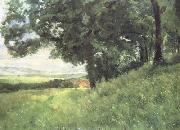 |
Louis Eysen
|
|
1843 - 1899
German painter and engraver. His family, which had moved to England in the 1840s, returned to Frankfurt am Main in 1850. He studied wood engraving with Alexander Stix (1819-93) at the St?delsches Kunstinstitut in Frankfurt and later achieved considerable success in this medium (e.g. Glade, 1868; see Zimmermann, p. 9). He was taught painting by Karl Hausmann (1825-86) and was influenced chiefly by contemporary French art. He first worked mainly in Berlin and then in Munich, where he met Otto Scholderer and Wilhelm Leibl, who painted his portrait (c. 1870; Frankfurt am Main, Stedel. Kstinst.). He studied with Leon Bonnat in Paris from 1869 to 1870. In 1873 he settled at Kronberg, |
|
|
|
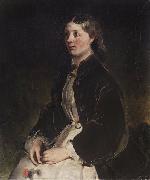 |
Louis Ferdinand von Rayski
|
|
Ferdinand von Rayski (1806 - 1890) was a German painter noted for his portraits.
Rayski was born in 1806 in Pegau. From 1816 to 1821 he studied drawing under Traugott Faber at the Freimaurerinstitut in Dresden and from 1823 to 1825 studied at Kunstakademie in Desseldorf. He began his career as a professional artist in 1829, painting portraits of his noble relatives in Hannover and Silesia. From 1831 to 1834 he lived in Dresden, where he received numerous portrait commissions. He traveled to Paris in 1834-35, and was influenced by the works of Delacroix, Gericault and Gros. Rayski gained a reputation as a distinguished portrait painter, but also produced animal and hunting scenes, as well as, yet less frequently, military, historical and mythological paintings. He lived in Dresden from 1840 until his death in 1890. |
|
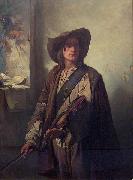 |
Louis Gallait
|
|
(9 or 10 May 1810 - 20 November 1887) was a Belgian painter. His d his reputation especially with the large painting of Charles V's abdication. Gallait's works were considered as the basis for a desirable renewal of historical paintings because of the realism, costume faithfulness and colorful posture of his paintings. His last artwork was sent on tour in Germany and that led to new signals even among German historians. He was also a distinguished portrait painter.
Gallait died in Brussels in 1887. There is a painting by Louis Gallait at the Norton Art Museum in West Palm Beach, Florida ("Art and Liberty").
|
|
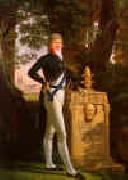 |
Louis Gauffier
|
|
1762-1801
French
Louis Gauffier Gallery
French painter. Following his move to Paris, where he became a pupil of Hugues Taraval and a student at the Academie Royale, in 1784 Gauffier shared the Prix de Rome with Jean-Germain Drouais and Antoine-Denis Chaudet (for sculpture), his own work being Christ and the Woman of Canaan (Paris, Ecole N. Sup. B.-A.). During his time in Rome (1785-9) Gauffier worked hard, but his health was poor and the results variable. On his return to Paris he was accepted (agree) by the Academie as a history painter. Soon after, he returned to Rome in order to escape the worsening situation in Revolutionary Paris, although he continued to send his Neo-classical works to the Salon. In March 1790 he married Pauline Chatillon (d July 1801), a portrait painter whom he and Drouais had taught.. |
|
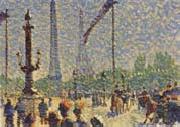 |
Louis Hayet
|
|
French, 1864-1940.French painter and writer. He was largely self-taught and initially earned his living as an itinerant painter-decorator. In 1881 he met Lucien and Camille Pissarro while painting landscapes near Pontoise and through them met Paul Signac in 1885 and Seurat in 1886. After a years military service at Versailles, Hayet moved to Paris in the autumn of 1887. There he began to apply to his paintings Eug?ne Chevreuls theories of colour contrast with which he had become familiar by 1881. A gifted watercolour painter, he also experimented with the ancient technique of wax encaustic, painting on a prepared cotton that allowed light to filter through. The paint surface of works such as The Grange (Beauchamp, France, priv. col., see 1983 Pontoise exh. cat., no. 1) retains a vivid tonal freshness, while the subject of crowds of peasants gathered before the Paris agricultural market reveals a debt to Pissarro. During the second half of the 1880s he became obsessed with the notion of passage |
|
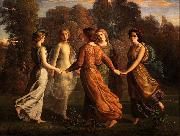 |
Louis Janmot
|
|
(21 May 1814 - 1 June 1892) was a French painter and poet.
Janmot was born in Lyon of Catholic parents who were deeply religious. He was extremely moved by the death of his brother in 1823 and his sister's in 1829. He became student at the Royal College of Lyon where he met Frederic Ozanam and other followers of his philosophy professor, Abbe Noirot. In 1831 he was admitted to the École des Beaux-Arts de Lyon and a year later, he won the highest honor, the Golden Laurel. In 1833, he came to Paris to take painting lessons from Victor Orsel and Jean-Auguste-Dominique Ingres. With other Lyon painters, he entered the Society of St. Vincent de Paul. In 1835, he went to Rome with Claudius Lavergne, Jean-Baptiste Frenet and other students and met Hippolyte Flandrin.
After his come back to Lyon in 1836, Janmot would attract the attention of critics of the Salon de Paris in conducting large-scale paintings with religious inspiration such as The Resurrection of the son of the widow of Nain (1839) or Christ in Gethsemane (1840). After 1845, he attracted the interest of Charles Baudelaire with his painting Flower of the Fields that allowed him to access to the Salon of 1846. Theophile Gautier was impressed by his Portrait of Lacordaire (1846). But the failure of his Poem of the Soul at the Universal Exhibition of 1855 disappointed him. In December of that year he married Leonie Saint-Paulet, from a noble family in Carpentras.
In 1856, Janmot obtained a commission to paint a fresco (since destroyed) representing the Last Supper for the church of St. Polycarp. Other orders followed, including the decoration of the dome of the Church of St. Francis de Sales and for the town hall that had been renovated by his friend the architect T. Desjardins. He was then appointed professor at the École des Beaux-Arts.
|
|
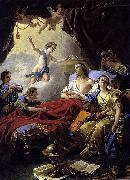 |
Louis Jean Francois Lagrenee
|
|
(December 30, 1724 - June 19, 1805) was a French painter, a pupil of Carlo Vanloo. His younger brother Jean-Jacques Lagren??e was also a painter.
Lagrenee was born in Paris. In 1755 he became a member of the Royal Academy, presenting as his diploma picture the Rape of Deianira (Louvre). He visited Saint Petersburg at the call of the empress Elizabeth, and on his return was named in 1781 director of the French Academy in Rome, a position he kept until 1787. He there painted the Indian Widow, one of his best-known works.
In 1804 Napoleon conferred on him the cross of the l??gion d'honneur, and on June 19, 1805 he died in the Louvre, of which he was honorary keeper.
|
|
|
|
|
|
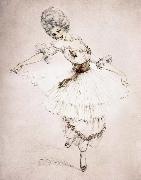 |
Louis Lcart
|
|
French (1880-1950)
Louis Icart was born in Toulouse, France. He began drawing at an early age. He was particularly interested in fashion, and became famous for his sketches almost immediately. He worked for major design studios at a time when fashion was undergoing a radical change-from the fussiness of the late nineteenth century to the simple, clingy lines of the early twentieth century. He was first son of Jean and Elisabeth Icart and was officially named Louis Justin Laurent Icart. The use of his initials L.I. would be sufficient in this household. Therefore, from the moment of his birth he was dubbed 'Helli'. The Icart family lived modestly in a small brick home on rue Traversi??re-de-la-balance, in the culturally rich Southern French city of Toulouse, which was the home of many prominent writers and artists, the most famous being Henri de Toulouse-Lautrec.
Icart fought in World War I. He relied on his art to stem his anguish, sketching on every available surface. It was not until his move to Paris in 1907 that Icart would concentrate on painting, drawing and the production of countless beautiful etchings, which have served (more than the other mediums) to indelibly preserve his name in twentieth century art history. When he returned from the front he made prints from those drawings. The prints, most of which were aquatints and drypoints, showed great skill. Because they were much in demand, Icart frequently made two editions (one European, the other American) to satisfy his public. These prints are considered rare today, and when they are in mint condition they fetch high prices at auction.
Art Deco, a term coined at the 1925 Paris Exposition des Arts Decoratifs, had taken its grip on the Paris of the 1920s. By the late 1920s Icart, working for both publications and major fashion and design studios, had become very successful, both artistically and financially. His etchings reached their height of brilliance in this era of Art Deco, and Icart had become the symbol of the epoch. Yet, although Icart has created for us a picture of Paris and New York life in the 1920s and 1930s, he worked in his own style, derived principally from the study of eighteenth-century French masters such as Jean Antoine Watteau, François Boucher and Jean Honor?? Fragonard.
In Icart's drawings, one sees the Impressionists Degas and Monet and, in his rare watercolors, the Symbolists Odilon Redon and Gustave Moreau. In fact, Icart lived outside the fashionable artistic movements of the time and was not completely sympathetic to contemporary art. Nonetheless, his Parisian scenes are a documentation of the life he saw around him and they are nearly as popular today as when they were first produced.
In 1914 Icart had met a magical, effervescent eighteen-year-old blonde named Fanny Volmers, at the time an employee of the fashion house Paquin. She would eventually become his wife and a source of artistic inspiration for the rest of his life. |
|
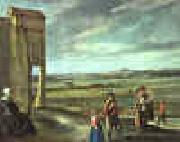 |
Louis Le Nain
|
|
1593-1648
French
Louis Le Nain Gallery
French family of painters. Antoine Le Nain (b Laon, c. 1600; bur Paris, 26 May 1648) and his brothers Louis Le Nain (b Laon, c. 1600; bur Paris, 24 May 1648) and Mathieu Le Nain (b Laon, c. 1607; bur Paris, 26 April 1677) lived together and shared a studio in Paris. Since the studio was headed by Antoine, he is assumed to have been older than Louis. The brothers reputation rests on a number of paintings signed Le Nain, on the basis of which other paintings (but no drawings) have also been attributed to them. None of the signed paintings bears a Christian name, and there is no secure way of attributing works to the individual brothers, although many attempts have been made. Eighteenth-century sale catalogues, fearful of anonymity, effectively chose from the three names at random. Since the writings of Witt (1910) and Jamot (1922) in particular, it has been habitual to ascribe small paintings on copper to Antoine, and austere, larger peasant scenes to Louis. This division of hands will be found in almost all the subsequent literature on the artists, although it must be stressed that there is no evidence at all to support it. Great efforts have also been made to identify works by Mathieu, since he survived his brothers by nearly 30 years and presumably continued to paint after their deaths in 1648. However, no such activity after 1648 is securely documented, and none of the surviving works bears a date later than 1647; and the arguments for a separate Mathieu oeuvre, though cogent, should not be regarded as conclusive. The outstanding feature of the work of the Le Nain brothers, and the basis of their celebrity since the mid-19th century, is the artists treatment of the poor. |
|
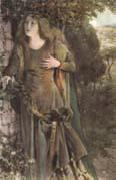 |
Louis Loeb
|
|
Landscape, Portrait, Figure-idylls
American 1866-1909
|
|
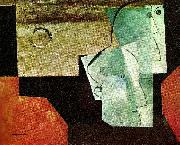 |
louis marcoussis
|
|
Louis Marcoussis, formerly Ludwik Kazimierz Wladyslaw Markus or Ludwig Casimir Ladislas Markus, (1878 or 1883, Warsaw -- October 22, 1941, Cusset) was a painter and engraver of Polish origin who lived in Paris for much of his life and became a French citizen.
After studying law briefly in Warsaw he went to the Krakow Academy of Fine Arts, where his teachers included Jan Stanislawski and Jozev Mehoffer. Moving to Paris in 1903, he spent a short time at the Academie Julian under Jules Lefebvre. The first time a painting of his was shown in a major exhibition was at the Salon d'Automne in 1905, and over the next quarter-century his work was shown in many other important exhibitions, in particular at the Salon des Independants and the Tuileries.
He drew cartoons for satirical journals, as he had earlier in Poland. In Paris he needed to earn his own living, and also took on other drawing and illustration work. In the cafes of Montmartre and Montparnasse he got to know Apollinaire, Braque, Degas, Picasso and many more artists and writers. It was Apollinaire who suggested Markus' French name, Marcoussis, after a village not far from Paris.
Impressionism influenced his early paintings, but from about 1910 he was part of the Cubist movement alongside other avant-garde painters like Picasso, Braque and Juan Gris. His work was shown in exhibitions in many European cities and in the US. In 1925 he had his first solo exhibition in Paris. As well as painting still-lifes and musical instruments in the Cubist manner, he also produced portraits, views of Paris, and images from the Breton seaside.
From 1930 onwards, he concentrated on printmaking and illustration, including work inspired by Apollinaire's Alcool, Tzara's Indicateur des chemins de cœur, and Éluard's Lingeres legeres and Aurelia. In the late 1930s Marcoussis collaborated with Spanish surrealist Joan Mire and taught him etching techniques. He also taught at the Academie Schlaefer.
In 1913 he had married Alice Halicka, a painter who came from Krakow. Their daughter Malene was born in 1922. Marcoussis served in a Polish company of the French Foreign Legion from 1914-1919. He became a French citizen, while also staying in touch with Poland, both personally and professionally. He did not generally talk about his Jewish ancestry, and his family had converted to Catholicism, but today Marcoussis is often described as a Jewish artist.
After Nazi troops arrived in Paris in 1940, Marcoussis and Alice moved to Cusset near Vichy. He died there on 22 October 1941 |
|
|
|
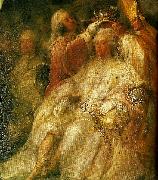 |
louis masreliez
|
|
Louis Masreliez (Adrien Louis Masreliez) född 1748 i Paris död 19 mars 1810, var en svensk målare, tecknare, grafiker och inredningsarkitekt.
Han var äldre bror till ornamentsbildhuggaren Jean Baptiste Masreliez och son till Jacques Adrien Masreliez, också han en ornamentsbildhuggare, som kallats till Sverige från Frankrike för att medverka vid uppförandet av Stockholms slott. Jacques Adrien Masreliez grundade således konstnärssläkten Masreliez i Sverige.
Louis Masreliez kom till Sverige 1753. Han började sin utbildning vid Ritarakademien vid 10 års ålder. Vid ritarakademien saknades utbildning i måleri, varför Masreliez inledde studier vid Lorens Gottmans verkstad. 1769 tilldelades han ett statligt studiestipendium som han använde till en studieresa till Paris och Bologna. 1773 lämnade han Bologna och bosatte sig i Paris, där han bodde under åtta år. Han återvände till Sverige 1782, där han blev ledamot av Konstakademien och året därpå professor i historiemåleri. Han blev rektor för akademien 1802 och direktör 1805.
Till hans genombrottsverk räknas Gustav III:s paviljong i Hagaparken |
|
 |
Louis Michel Eilshemius
|
|
(February 4, 1864 - December 29, 1941) was an American painter, primarily of landscapes and nudes. Although he was academically trained, much of his work has the unself-aware character of naive art. Eilshemius was a grandson of Swiss painter Louis-Leopold Robert.
Born near Newark, New Jersey into a wealthy family, his earliest education was in Europe, after which he spent two years at Cornell University before his art studies began at the Art Students League of New York. He subsequently studied under Bouguereau at the Academie Julian in Paris, and traveled widely in Europe, Africa and the South Seas, returning to the family brownstone in New York City where he was to live for the rest of his life. |
|
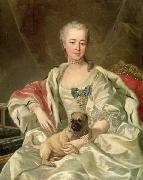 |
Louis Michel van Loo
|
|
Louis-Michel van Loo (2 March 1707-20 March 1771) was a French painter.
He studied under his father, the painter Jean-Baptiste van Loo, at Turin and Rome, and he won a prize at the Academie Royale de Peinture et de Sculpture in Paris in 1725. With his uncle, the painter Charles-Andre van Loo, he went to Rome in 1727 - 1732, and in 1736 he became court painter to Philip V of Spain at Madrid, where he was a founder-member of the Academy in 1752. He returned to Paris in 1753, and painted many portraits of Louis XV of France. In 1765 he succeeded Charles-Andre as director of the special school of the French academy known as the Ecole Royale des Eleves Proteges. In 1766 he made the portrait of the Portuguese statesman Sebastiao de Melo, Marquis of Pombal.
Among his brothers were the painters Francois van Loo (1708 - 1732) and Charles-Amedee-Philippe van Loo (1719 - 1795). |
|
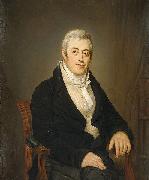 |
Louis Moritz
|
|
painted Portrait of Jonas Daniël Meijer (1780-1834), jurist. in 1800-1834
|
|
|
|
|
|
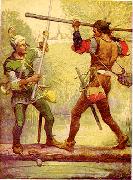 |
Louis Rhead
|
|
Louis John Rhead (November 6, 1857 - July 29, 1926) was an English-born American artist, illustrator, author and angler who was born in Etruria, Staffordshire, England. He emigrated to the United States at the age of twenty-four.
|
|
|
|
|
|
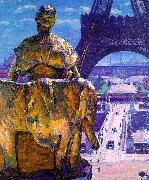 |
Louis Welden Hawkins
|
|
British
1849-1910
Louis Welden Hawkins Galleries
Louis Welden Hawkins was born in Germany ( 1 July 1849 ). His mother was an Austrian Baroness, his father Englishman. Hawkins moved soon to France and took later French nationality. Hawkins attended the famous Acad??mie Julian in Paris. Hawkins became famous after his expositions in the Salon de la Societe des Artistes Francais. His first work was shown in the Salon in 1881. After that, expositions followed at the Salon de la Societe des Beaux Artes (1894-1911), the Salon de la Rose-Croix (1894-95) and La Libre Esthetque in Brussels. He spended his last years in Brittany, where he painted mostly landscapes.
Louis Welden Hawkins died in 1910 and was honoured a year later at the Salon Nationale. |
|
|
|
|
|
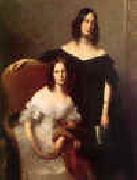 |
Louis-Edouard Dubufe
|
|
1819-1883 French
Son of Claude-Marie Dubufe. He was trained by his father and then by Paul Delaroche. He first appeared at the Salon in 1839 with the Annunciation, a Huntress and a portrait, winning a third class medal. He followed this in 1840 with an episode in the life of St Elisabeth of Hungary, which won him a second class medal; in 1844 he won a first class medal with Bathsheba and a genre scene set in the 15th century (all untraced). |
|
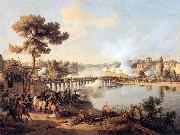 |
Louis-Francois, Baron Lejeune
|
|
(3 February 1775, Strasbourg - 29 February 1848) was a French general, painter, and lithographer. His memoirs have frequently been republished and his name is engraved on the Arc de Triomphe.
He studied painting in the studio of Pierre-Henri de Valenciennes, alongside Jean-Victor Bertin, but left the studio to volunteer in the Compagnie des arts de Paris in 1792. He received his baptism of fire in the battle of Valmy later that year. He became a sergeant in the 1st Arsenal battalion and in 1793 moved to the artillery at La Fere, assisting in the sieges of Landrecies, Le Quesnoy and Valenciennes. At Valenciennes he became aide-de-camp to general Jacob then, as a lieutenant on attachment to the engineers, took part in the 1794 Holland campaign and the 1795 campaign.
Called to the depot in 1798, he succeeded brilliantly in his exams and was made a captain on attachment to the engineers. He became aide-de-camp to marshal Berthier in 1800, a post he retained until 1812 and in which he took an active part in practically all of the Napoleonic campaigns. He was wounded and captured in Spain. He was promoted to full captain after Marengo and chef de bataillon after Austerlitz, also become a knight of the Legion d'honneur and a colonel at the Siege of Saragossa.
The German campaign of 1806 brought him to Munich, where he visited the workshop of Alois Senefelder, the inventor of lithography. Lejeune was fascinated by the possibilities of the new method and whilst there he made the drawing on stone of his famous Cossack (printed by C. and ~f. Senefelder, 1806). Whilst he was taking his dinner, and with his horses harnessed and waiting to take him back to Paris, one hundred proofs were printed, one of which he subsequently submitted to Napoleon. The introduction of lithography into France was greatly due to the efforts of Lejeune.
In 1812, during the French invasion of Russia, he was made general de brigade and chief of staff to Davout. Frostbitten on the face, Lejeune left his post during the retreat from Russia and was arrested on the orders of Napoleon. Freed in March 1813, Lejeune was then sent to the Illyrian provinces, before rejoining the army under the orders of marshal Oudinot, becoming his chief of staff. During the Saxony campaign, Lejeune was present at the Battle of Lutzen (1813), the crossing of the River Spree and at Bautzen. He was made an officer of the Legion d'honneur and a commander of the Order of Maximilian of Bavaria. At the battle of Hoyersverda, when Below's corps wiped out the 12th corps formed up in square on the plain, Lejeune (at risk of being kidnapped) ventured into the enemy lines with one battalion, general Wolf's cavalry and six 12 pounder guns. He thus broke the whole of the Prussian artillery and saved marshal Oudinot and his army. Wounded several times and lastly at Hanau, he was authorised to leave the army in November 1813 after more than 20 years' service. After his departure from the army, he devoted himself to painting.
|
|
|
|
|
|
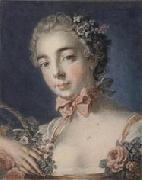 |
Louis-Marin Bonnet
|
|
French, 1736 - 1793
French engraver and publisher. He came from a family of artisans and owed his training in engraving to his brother-in-law, the engraver Louis Legrand (1723-1808). Through Legrand, Bonnet became the pupil of Jean-Charles Francois in 1756, a year before the latter discovered the CRAYON MANNER technique of engraving, designed to reproduce the effect of a coloured-chalk drawing. Around the end of 1757 Bonnet used the new technique to engrave a Cupid after Francois Eisen. Gilles Demarteau, a rival of Jean-Charles Francois |
|
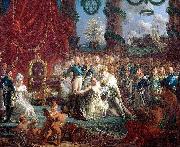 |
Louis-Philippe Crepin
|
|
(1772-1851) was a French naval painter, one of the first Peintres de la Marine.
Crepin was notably a pupil of Joseph Vernet and Hubert Robert.
His Combat de la Bayonnaise contre l'Ambuscade, 1798, depicting the Action of 14 December 1798, is one of the main exhibits of the Musee national de la Marine.
|
|
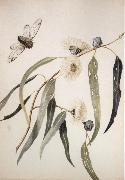 |
Louisa Anne Meredith
|
|
English miniaturist, watercolourist, engraver, poet, writer and botanist .
1812-1895
was an English and Australian writer and illustrator. Louisa Anne Meredith, the daughter of Thomas Twamley and Louisa Ann Meredith, was born near Birmingham, England on 20 July 1812. She was educated chiefly by her mother, and in 1835 published a volume, Poems, which was favourably reviewed. This was followed in 1836 by The Romance of Nature, mostly in verse, of which a third edition was issued in 1839. Another volume was published in the same year, The Annual of British Landscape Scenery, an account of a tour on the River Wye from Chepstow to near its source at Plynlimon. Shortly afterwards Miss Twamley was married to her cousin, Charles Meredith. Charles had emigrated to Van Dieman's Land in 1821 with his father George and family. They had been pioneers of grazing, whaling and other activities around Swansea on Tasmania's East Coast. Charles had become a squatter in the Canberra district of New South Wales They sailed for New South Wales in June 1839, and arrived at Sydney on 27 September 1839. After travelling into the interior as far as Bathurst, Mrs Meredith returned to the coast and lived at Homebush for about a year. By the time of his return to New South Wales, severe economic depression caused by excessive land speculation had destroyed the value of Charles' property, and towards the end of 1840 they relocated to Tasmania. An interesting account of her first 11 years in Australia is given in her two books, Notes and Sketches of New South Wales (1844), reprinted at least twice, and My Home in Tasmania (1852), which was soon republished in the United States of America under the title Nine Years in Australia. For much of her life Mrs Meredith lived on properties around Swansea. In 1860 she published Some of My Bush Friends in Tasmania which contained elaborate full-colour plates printed by the new chromolithography process. The illustrations were drawn by herself, and simple descriptions of characteristic native flowers were given. In the following year an account of a visit to Victoria in 1856, Over the Straits, was published, and in 1880 Tasmanian Friends and Foes, Feathered, Furred and Finned. This went into a second edition in 1881. In 1891, in her eightieth year, Mrs Meredith went to London to supervise the publication of Last Series, Bush Friends in Tasmania. Published at the outset of a severe financial depression in the Australian colonies, this project and the collapse of the bank where most of her savings were held ruined her financially. She died at Melbourne on 21 October 1895 and was survived by sons Owen and George. Mrs Meredith was the author of two novels, Phoebe's Mother (1869), which had appeared in the Melbourne weekly The Australasian in 1866 under the title of Ebba, and Nellie, or Seeking Goodly Pearls (1882). Mrs Meredith took great interest in politics, her husband Charles being a Member of the Tasmanian Legislative Council for several terms between the mid 1850s until just before his death in 1881. |
|
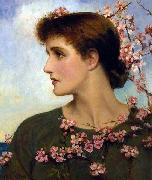 |
Louise Jopling
|
|
(16 November 1843 - 19 November 1933) was an English painter of the Victorian era, and one of the most prominent women artists of her generation.
Louise Goode was born in Manchester, fifth child of railway contractor T. S. Goode. She married at seventeen to civil servant Frank Romer. The Baroness de Rothschild, a connection of Romer's, encouraged Louise to pursue and develop her art. In the later 1860s she studied in Paris with Charles Joshua Chaplin and Alfred Stevens, and first exhibited her work at the Salon. She entered works into the Royal Academy shows, 1870-73 (as Louise Romer). |
|
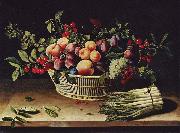 |
Louise Moillon
|
|
(1610-1696) was a French painter in the Baroque era. She became known as one of the best female still life painters during her time, and worked for King Charles I of England, as well as the French nobility.
Moillon came from a strict Calvinist family. Her father, brother Isaac, and stepfather were both paint dealers and artists themselves. According to the RKD, Louise (also known as Louisa) learned to paint from her father Nicolas Moillon and Francois Garnier. She gained her particular style of still life painting from the Academie de Saint-Germain-des-Pres. She usually signed her paintings with Louyse Moillon. Moillon lived and worked in France her whole life. |
|
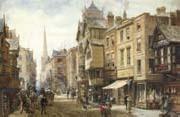 |
Louise Rayner
|
|
Victorian Women Artists,English 1832 - 1924.
He was a British watercolor artist. Her parents, Samuel Rayner and Anne Rayner (nee Manser) were both noted artists, the former Samuel having been accepted for exhibition at the Royal Academy when he was 15. Four of Louise's sisters - Ann ("Nancy"), Margaret, Rose and Frances - and her brother Richard were also artists. The family lived in Matlock Bath and Derby before moving to London in 1842. Louise studied painting from 15, with the guidance of her father and later with artist friends such as George Cattermole, Edmund Niemann, David Roberts and Frank Stone. Her first exhibited work was entitled The Interior of Haddon Chapel, shown at the Royal Academy in 1852, the first of a series of oils. From 1860, however, her medium was watercolour, which she exhibited for over 50 years via organisations including the Society of Lady Artists, Royal Academy, Royal Watercolour Society and the Royal Society of British Artists. She lived in Chester but travelled extensively, painting British scenes, during the summers in 1870s and 1880s. Her paintings are very detailed and highly picturesque populated street scenes capturing the "olde worlde" character of British towns and cities. Her paintings are very popular today as prints and on jigsaw puzzles. Around 1910 she moved with her sister to Tunbridge Wells, and later to St Leonards, where she died in 1924. |
|
|
|
 |
Louise-Catherine Breslau
|
|
(6 December 1856 - 12 May 1927) was a German/Swiss artist.
Born Maria Luise Katharina Breslau in Munich, Germany, she spent her childhood in Zurich, Switzerland and as an adult made Paris, France her home. Suffering from asthma all her life, Breslau turned to drawing as a child to help pass the time while confined to her bed. Although she became one of the most sought after portraitists of her time, after her death she and her work were all but forgotten. It has only been in the past few years that interest in Breslau and her works has been growing.
Breslau was born into a prosperous bourgeois family; her father was a well-respected physician specializing in obstetrics and gynecology. When Breslau was two years old, her father accepted the position of professor and head physician of Obstetrics and Gynecology at the University of Zurich; Switzerland became home to the Breslau family. |
|
|
|
|

